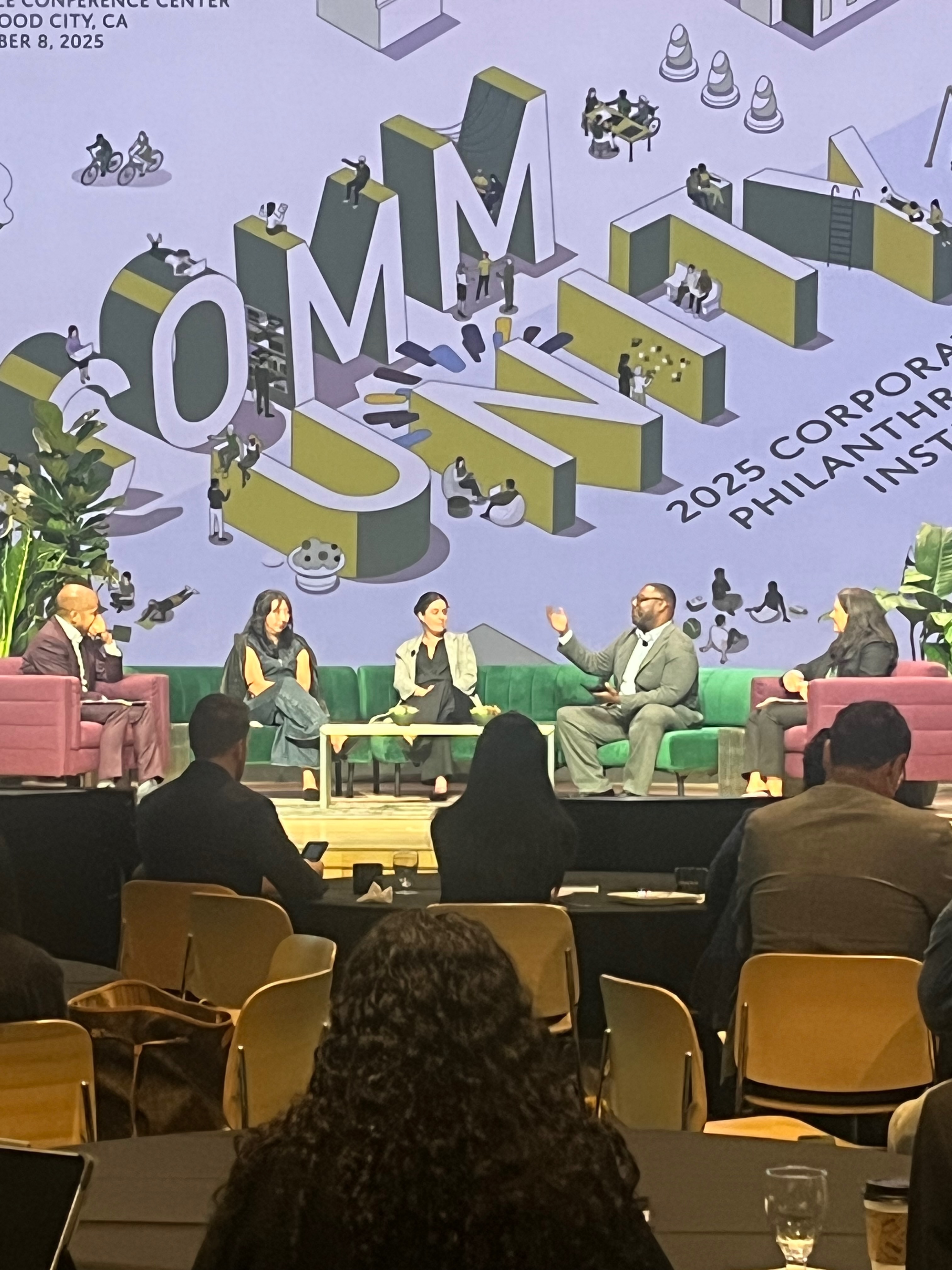Funding and Building Teams for Narrative Change

If I’ve learned anything in the last few weeks, it's that community is everything and a narrative shift is essential.
Over the past few weeks, I've had the privilege of attending two powerful convenings focused on the future of philanthropic communications: the Northern California Grantmakers Corporate Philanthropy Institute and ComNet 25 in Denver. While separated by time and geography, both events converged on a critical theme, the urgent need to build bridges and reshape narratives in our deeply divided moment.
Here are my three key takeaways from these experiences:
1. We Must Tell Better Stories About Our Shared Humanity
The most resonant message across both gatherings was clear: the stories we tell matter profoundly. In philanthropy and corporate social responsibility, we've become experts at sharing data, impact metrics, and program outcomes. But we've often forgotten to lead with the human stories that connect us across differences.
Bridge building doesn't happen through policy papers or grant reports, it happens when we recognize ourselves in each other's experiences. Both events challenged us to move beyond transactional narratives and embrace storytelling that highlights our common struggles, hopes, and dreams. This means amplifying voices from communities directly affected by our work, not just speaking about them but creating platforms for them to speak for themselves.
2. Narrative Change Requires Intentional Relationship Building Across Divides
The second major insight was about the "how" of bridge building. It's not enough to want connection and community, instead we must actively design for it. Several speakers and sessions emphasized that meaningful narrative change happens through sustained, uncomfortable, and intentional relationship building with people and communities who don't already agree with us.
This work requires us to:
- Step outside our echo chambers and engage with diverse perspectives
- Create spaces for genuine dialogue, not just performative conversation
- Build trust over time through consistent presence and follow-through
- Be willing to be changed by the relationships we form
Both the Corporate Philanthropy Institute and ComNet challenged us to audit our networks: Who are we in relationship with? Whose voices are missing? Where are we staying comfortable instead of seeking connection across lines of difference?
3. We Need Systemic Approaches to Our Work
Finally, both events underscored that while individual commitment to bridge building is essential, we need systemic change in how our institutions operate. This means:
- Redesigning grantmaking processes to fund bridge-building work and narrative change efforts
- Investing in communications infrastructure that supports diverse voices and counters misinformation
- Measuring success differently by valuing relationship building and narrative shift alongside traditional metrics
- Aligning internal culture with external messaging so our organizations model the bridge building we seek to support
The philanthropy sector has significant resources and influence. The question both events posed was pointed: Will we use that power to reinforce divisions or to build the connective tissue our communities desperately need?
Translating these takeaways into hiring objectives
So, how do we translate this to hiring essential capabilities to execute against our ambitious work.
- Self-awareness and a growth mindset. Bridge building requires ongoing reflection about our own biases, blind spots, and positions of power. We’re looking for candidates who can articulate their own journey of learning, admit mistakes, and demonstrate genuine commitment to growth.
- Systems thinking. Both communications and grantmaking are moving beyond individual transactions toward ecosystem approaches. Hire people who can see connections, understand how narrative change happens at multiple levels, and think strategically about long-term transformation.
- Courage and resilience. This work involves risk. We have to be open to funding controversial bridge-building efforts, telling stories that challenge dominant narratives, and staying in relationship when it's uncomfortable. Look for candidates who have demonstrated open to risk in their previous work and the resilience to sustain this challenging work over time.
Rethinking the hiring process itself
Finally, if we want to hire for bridge building, we need to examine our hiring processes. Are we only recruiting from a narrow set of institutions or networks? Are our job descriptions written in jargon that excludes people without traditional philanthropy experience? Are we creating interview processes that allow candidates to demonstrate their relationship-building skills and narrative competence, not just their ability to answer standard questions?
Moving Forward
As I reflect on these gatherings, I'm struck by both the urgency and the possibility of this moment. The challenges facing our communities. Polarization, misinformation, eroded trust are real and daunting. But so too is the growing recognition across the sector that we must do better.
Bridge building and narrative change aren't soft skills or nice-to-have additions to our work. They are essential strategies for creating lasting social impact in a fractured world. The conversations at the Corporate Philanthropy Institute and ComNet 25 reminded me that we already have the tools we need: authentic stories, intentional relationships, and a willingness to transform our systems.














